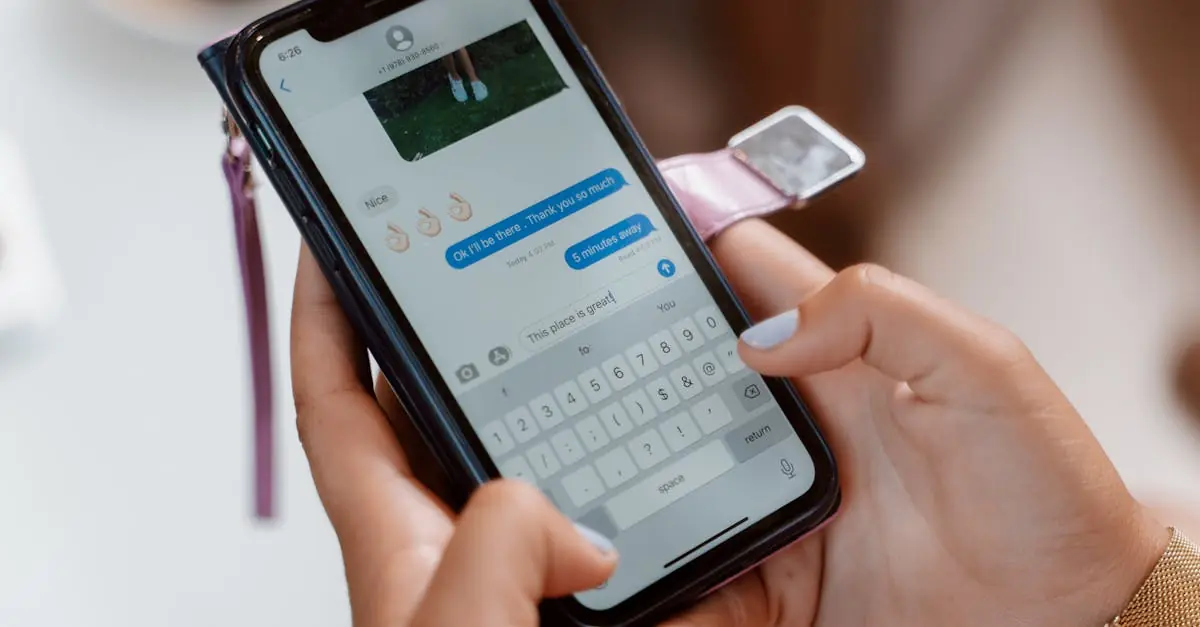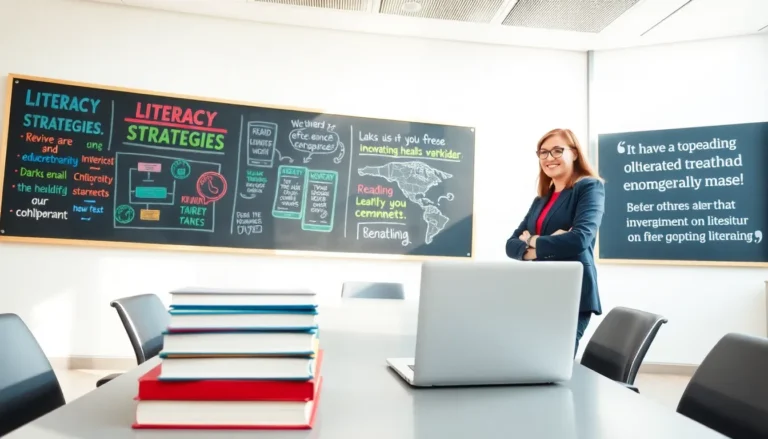Imagine this: you’re lying in bed, cozy and warm, and suddenly remember that important birthday wish you need to send. You could leap out of your blankets and risk frostbite or you could just schedule that text. But can an iPhone really send scheduled texts?
Table of Contents
ToggleCan iPhone Send Scheduled Texts?
iPhones don’t include a native feature for sending scheduled texts. Users can’t directly set a specific time to send messages through the built-in Messages app. Alternatives exist, allowing for scheduled text functionality.
Third-party apps provide solutions for sending text messages at predetermined times. Some popular options include Scheduled App, Text Timer, and Later. These applications enable users to compose and schedule messages, ensuring timely delivery without extra effort.
Using these apps, individuals can set reminders for important events or special occasions. Creating a scheduled message takes just a few steps. Simply write the text, select the date and time, and the chosen app will handle the rest.
In some cases, automation shortcuts can help achieve scheduled messages on an iPhone. The Shortcuts app, available on iOS devices, enables users to create personalized automation. Automating tasks can send reminders or messages at specific times or based on location.
Despite the absence of a default scheduling option, users can still enjoy the benefits of sending scheduled texts with the right tools. Technology continues to evolve. Staying updated with the latest apps and features maximizes texting convenience for all iPhone users.
Methods to Schedule Texts on iPhone
iPhones don’t offer a built-in feature for scheduling texts, but users can rely on several methods to accomplish this. These methods integrate automated solutions to enhance messaging capabilities.
Using the Shortcuts App
The Shortcuts app enables users to create custom automations. He or she can set specific times for sending messages through a series of steps. First, users create a new shortcut, selecting the “Send Message” action. Then, they can specify the recipient and the message content. After that, setting the automation trigger lets the user choose an appropriate time. This method provides a flexible option for sending scheduled messages without third-party applications.
Third-Party Applications
Several third-party applications facilitate scheduling texts effectively. Users can explore apps like Scheduled App, Text Timer, and Later, which specialize in this feature. Each app allows composing messages ahead of time, ensuring delivery at the designated moment. For example, Scheduled App offers a simple interface for selecting dates and times, making message scheduling straightforward. Text Timer provides countdown features for reminders, while Later integrates with social media for multi-platform messaging. Choosing the right app enhances the ability to send timely texts and stay organized.
Limitations of Scheduling Texts on iPhone
Scheduling texts on an iPhone has notable restrictions despite its convenient messaging capabilities. Users must understand these limitations before relying solely on their devices for timely communication.
Native Messaging App Restrictions
The built-in Messages app on iPhone lacks a native scheduling feature. Users can’t set specific times for messages to be sent automatically. Without this functionality, users depend on external applications for scheduling texts. While the Shortcuts app offers workarounds, it requires setup and may not provide a seamless experience when compared to dedicated options. Third-party apps serve as better solutions for those wanting easy scheduling. Individuals seeking efficiency often turn to these alternatives for added convenience.
Compatibility Issues with Carriers
Carrier compatibility often impacts scheduled texting functions on iPhones. Not all carriers support third-party scheduling apps, which may limit users’ options. Some features may not work across different networks or cause delays in message delivery. Users should verify their carrier’s capabilities before investing time in scheduling texts. Awareness of these potential issues can prevent misunderstandings when messages don’t arrive as intended.
Tips for Effective Scheduled Texting
Scheduling texts enhances communication. Consider these tips for successful implementation.
Choosing the Right Time
Select a time that matches the recipient’s schedule. Important events like birthdays or anniversaries warrant prompt delivery. Think about time zones if sending messages across the globe. Late-night texts may disrupt sleep, so aim for morning or early afternoon. Test messages ahead of time to gauge typical response times. Observe when recipients usually respond to similar messages. Pick a time when emotional impact is high for special occasions. Align the scheduled text with significant moments to enhance its importance.
Personalization and Follow-Up
Tailor messages to the recipient’s personality for better engagement. Encourage spontaneity even in scheduled texts; a personal touch increases emotional value. Include the recipient’s name or reference shared memories. Follow up after sending a scheduled text to confirm receipt and gather feedback. Consider sending a playful reminder for important occasions. Synchronize follow-up messages with events or milestones to maintain engagement. Personalized texts foster deeper connections while ensuring timely communication.
While iPhones don’t support native scheduled texting through the Messages app users can still achieve this functionality using third-party apps and the Shortcuts app. These alternatives provide flexibility for those wanting to send timely messages for special occasions.
Understanding the limitations of scheduling texts on iPhones is crucial. Relying on external applications may introduce compatibility issues with certain carriers which can affect message delivery.
By selecting the right tools and considering the recipient’s schedule users can enhance their texting experience. Thoughtful communication is key to maintaining connections and ensuring messages are received when they matter most.



